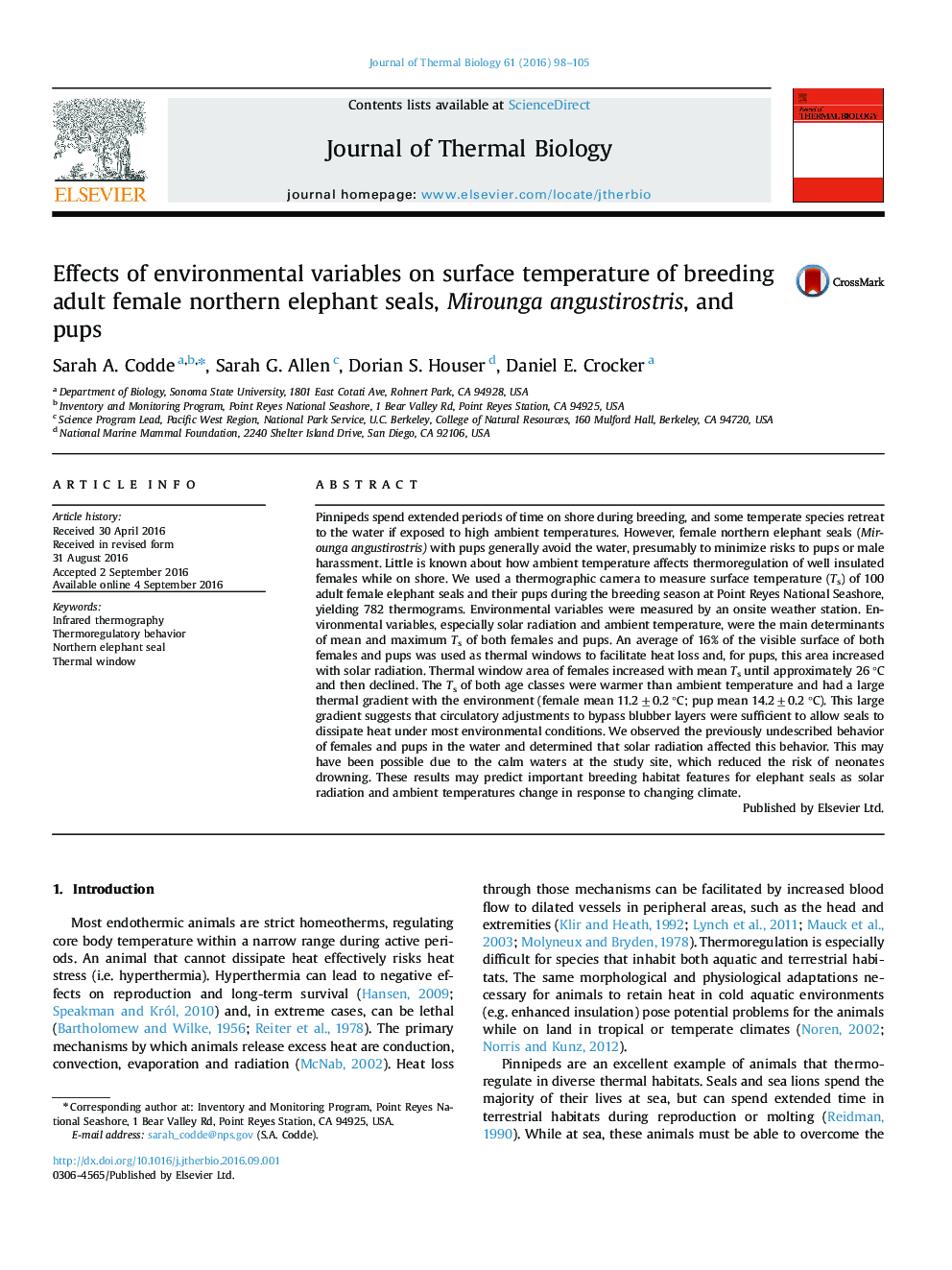| کد مقاله | کد نشریه | سال انتشار | مقاله انگلیسی | نسخه تمام متن |
|---|---|---|---|---|
| 2842648 | 1571085 | 2016 | 8 صفحه PDF | دانلود رایگان |
عنوان انگلیسی مقاله ISI
Effects of environmental variables on surface temperature of breeding adult female northern elephant seals, Mirounga angustirostris, and pups
ترجمه فارسی عنوان
اثر متغیرهای محیطی بر دمای سطح پرورش دام های زن بالغ شمالی، میروونگا آنگوستروستریس و نوزادان
دانلود مقاله + سفارش ترجمه
دانلود مقاله ISI انگلیسی
رایگان برای ایرانیان
کلمات کلیدی
ترموگرافی مادون قرمز، رفتار ترموستات، مهر و موم شمال فیل، پنجره حرارتی،
موضوعات مرتبط
علوم زیستی و بیوفناوری
علوم کشاورزی و بیولوژیک
علوم کشاورزی و بیولوژیک (عمومی)
چکیده انگلیسی
Pinnipeds spend extended periods of time on shore during breeding, and some temperate species retreat to the water if exposed to high ambient temperatures. However, female northern elephant seals (Mirounga angustirostris) with pups generally avoid the water, presumably to minimize risks to pups or male harassment. Little is known about how ambient temperature affects thermoregulation of well insulated females while on shore. We used a thermographic camera to measure surface temperature (Ts) of 100 adult female elephant seals and their pups during the breeding season at Point Reyes National Seashore, yielding 782 thermograms. Environmental variables were measured by an onsite weather station. Environmental variables, especially solar radiation and ambient temperature, were the main determinants of mean and maximum Ts of both females and pups. An average of 16% of the visible surface of both females and pups was used as thermal windows to facilitate heat loss and, for pups, this area increased with solar radiation. Thermal window area of females increased with mean Ts until approximately 26 °C and then declined. The Ts of both age classes were warmer than ambient temperature and had a large thermal gradient with the environment (female mean 11.2±0.2 °C; pup mean 14.2±0.2 °C). This large gradient suggests that circulatory adjustments to bypass blubber layers were sufficient to allow seals to dissipate heat under most environmental conditions. We observed the previously undescribed behavior of females and pups in the water and determined that solar radiation affected this behavior. This may have been possible due to the calm waters at the study site, which reduced the risk of neonates drowning. These results may predict important breeding habitat features for elephant seals as solar radiation and ambient temperatures change in response to changing climate.
ناشر
Database: Elsevier - ScienceDirect (ساینس دایرکت)
Journal: Journal of Thermal Biology - Volume 61, October 2016, Pages 98-105
Journal: Journal of Thermal Biology - Volume 61, October 2016, Pages 98-105
نویسندگان
Sarah A. Codde, Sarah G. Allen, Dorian S. Houser, Daniel E. Crocker,
